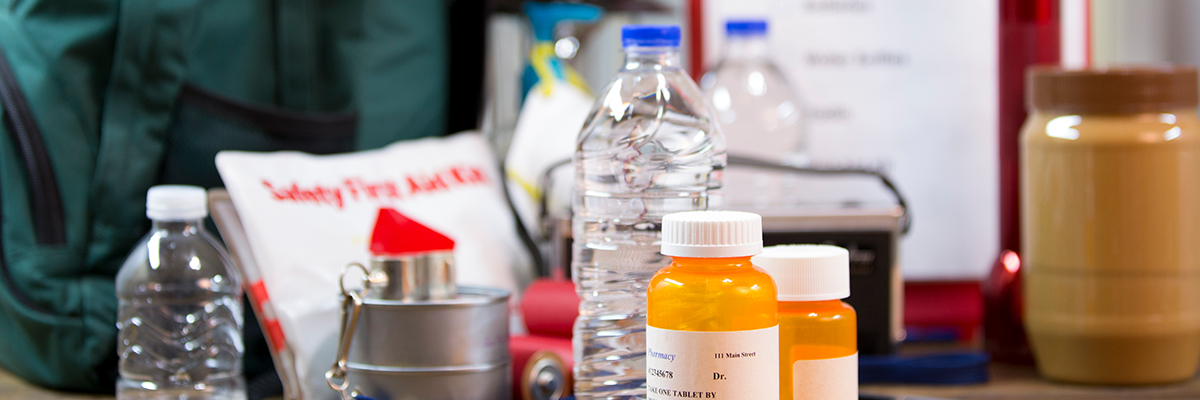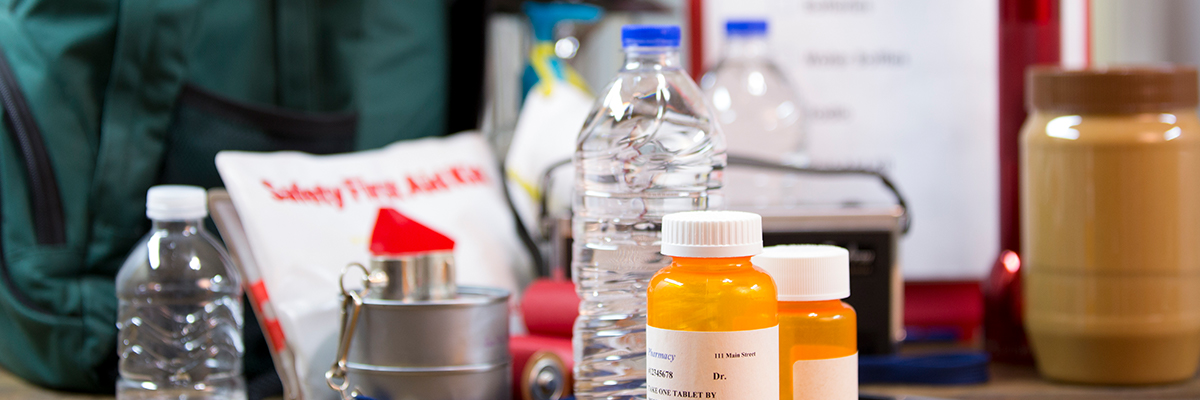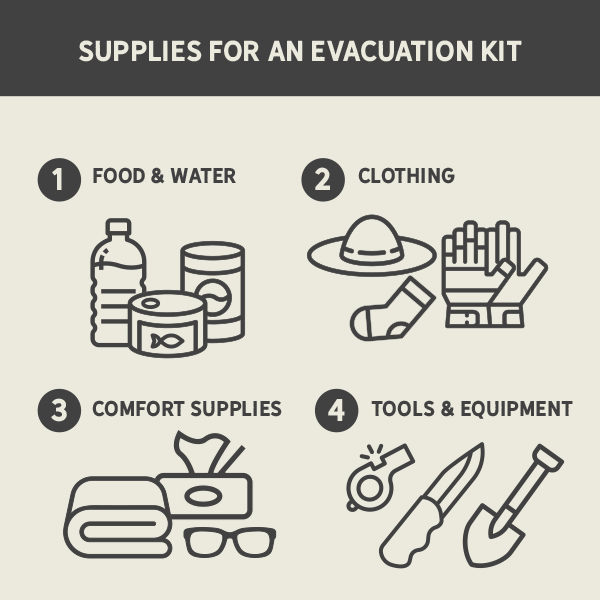

Home Emergency Kit: What to Have on Hand
Being prepared for emergencies is critical to the safety and comfort of your family. Even if you never need an emergency readiness kit (and we certainly hope you won’t!), the peace of mind that comes from being prepared is priceless. Plus, you’ll have what you need in case that emergency does roll around.
Let’s face it: It’s far better to be over-prepared than to face empty shelves at the grocery store or deal with crowds scrambling to find what they need in the event of an emergency or increasingly common weather events.
That’s why experts from FEMA to the Red Cross to Texas A&M’s Ag Extension Service and nearly every other group we can think of recommend preparing for at least 72 hours of isolation due to a weather event or other unforeseen circumstances.
It’s even better if you have an “at-home kit” that sets you up for as long as 14 days and a grab-and-go kit that will see you through three days away from home. This way, you can be ready for whatever life throws your way.
Preparing for Different Types of Emergencies
There are two basic scenarios to consider when preparing an emergency readiness kit.
Sheltering at Home
This is typically the result of a weather event like a storm or a hurricane. And while you may have enough warning of an approaching event to stock up, if you already have your supplies on hand, you won’t need to join the crowds of last-minute shoppers.
Evacuating the Area
These situations are definitely worth preparing for because you’ll need to act quickly. Possible reasons could include a fast-moving fire, flash flood, hurricane surge, chemical spill, or other accident.
Emergency Kit: Sheltering at Home
Every family and situation is a bit different. Still, most experts agree the items listed below are the minimum to have on hand.
All of these items can be stored together in a dry, cool closet. Or you can pack them in plastic bins or large plastic garbage cans with a lid. Put it in your garage, so you’re not tempted to use your emergency items when it’s not an emergency. (That means you need to go to the store if you run out of peanut butter in an ordinary week.)

Supplies for Sheltering at Home
1. Water
- One gallon per person per day (that’s three gallons each for 72 hours)
2. Food
You may not be able to rely on what’s in your freezer or fridge, so stock up on non-perishable items that don’t require cooking like:
- Canned and/or dried fruit
- Canned meats or fish
- Crackers
- Peanut butter
3. Equipment
- Make sure to replace the batteries every six months.
- Battery-operated radio with extra batteries
- Duct tape and plastic bags (These are just handy for all kinds of things.)
- Flashlight
- Manual can opener
- Matches
4. Personal care
- Prescription medications and supplies
- Hand sanitizer
- Toilet paper
- Toothbrush and paste
- Add feminine sanitary supplies to this list if needed
5. First aid kit
You may want to buy a ready-made kit, but if you prefer to assemble your own include:
- Adhesive bandages
- Antibiotic cream
- Burn ointment
- Disinfectant
- Gauze
- OTC pain reliever
- Surgical masks
- Sterile gloves (2-3 pairs)
- Thermometer
6. Special cases
- Baby supplies including diapers, wipes, formula, and bottles
- Pet food and supplies plus additional water
Emergency Kit: Evacuations
The items below are In addition to all of the supplies listed for your at-home kit. Ideally, you’ll have your at-home items stored in a container you can quickly put in your car’s trunk. The following items packed in individual, easy-to-carry backpacks for each person in your family could come in handy. These events can be very stressful but they’re a lot less scary when you’ve put in the time to plan for them.

Supplies for an Evacuation Kit
1. Food and water:
- At least one day’s worth of dried foodstuff (easier to carry than canned goods)
- Water purification tablets and stainless tumbler
2. Clothing:
- Complete change of clothing, including shoes and socks
- Gloves
- Hats: one for cold and one for sun
- Prescription eyeglasses
3. Comfort supplies:
- Baby wipes
- Blanket
- Prescription eyeglasses, if you wear them
4. Tools and equipment:
- Hammer
- Knife
- Small shovel
- Pliers
- Whistle
- Paper map of your state (yes, the old-fashioned folded paper kind)
General Readiness for Any Emergency
You can set yourself and your family up for getting through an emergency more easily by taking these precautions.
- Keep your vehicles gassed up.
- Make sure your family members know where utility shut offs are and how to work them.
- Pick a location where your family will gather if you are separated and plan several routes to get there.
- Store your essential documents, including the deed to your home/land, your passport and social security cards, insurance policies, and information about medical conditions in a portable, fire-proof box.
A Note About Farm and Ranch Emergency Readiness
Preparing for an emergency when you’ve got animals and a large property as well as people to take care of is an extra challenge. Fortunately, there are resources that have been specifically designed to help you prepare for and recover from an emergency that impacts your farm or ranch. Check out this site for great checklists and instructions.
Should I Buy a Premade Emergency Readiness Kit?
While it can be upsetting to think about and plan for emergencies, you’ll be glad you did. A variety of online and retail resources offer premade kits that make getting ready a one-step process. However, putting your own kit together is generally less expensive and makes it easy to customize. Bookmark this page so the checklists are easy to find as you pull together your supplies and be further prepared with our helpful tips during storms and other emergencies.
